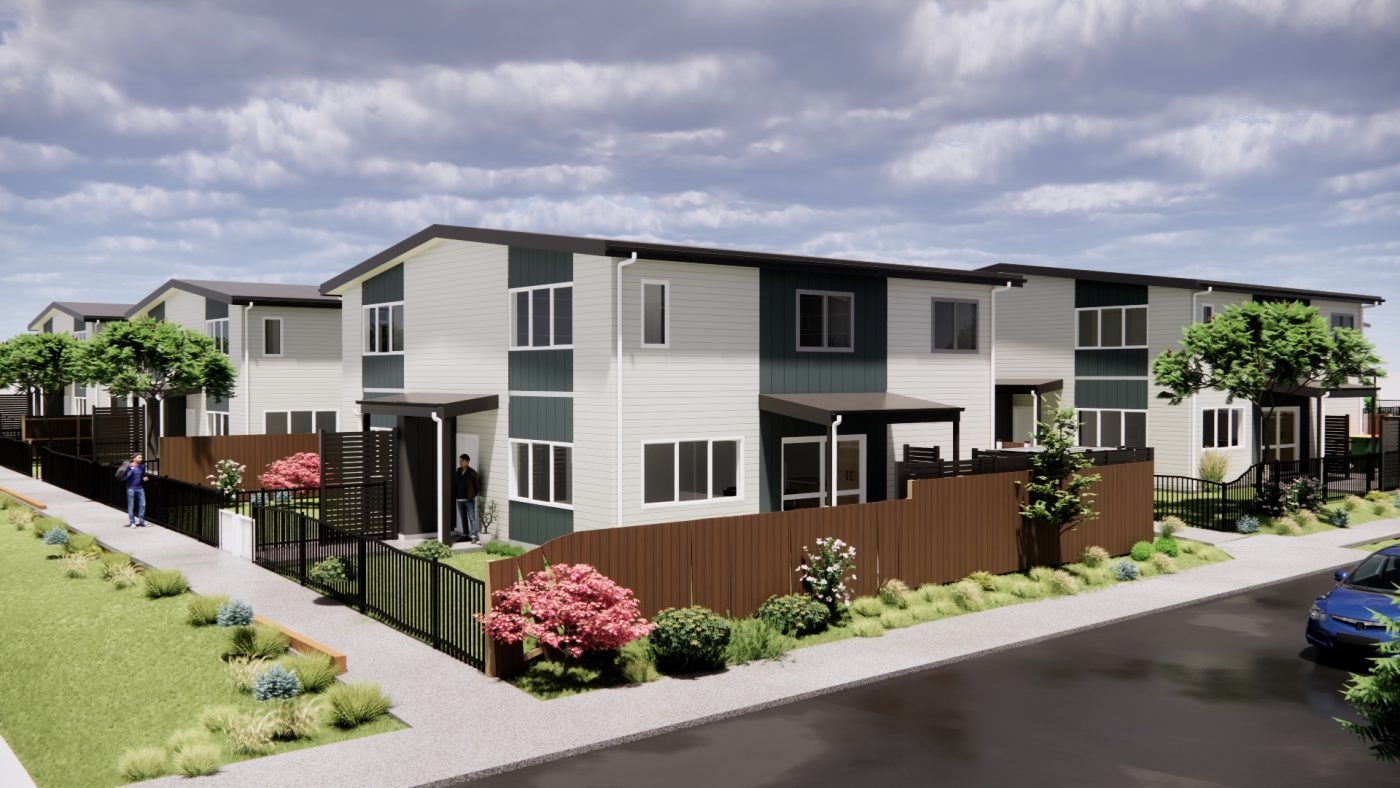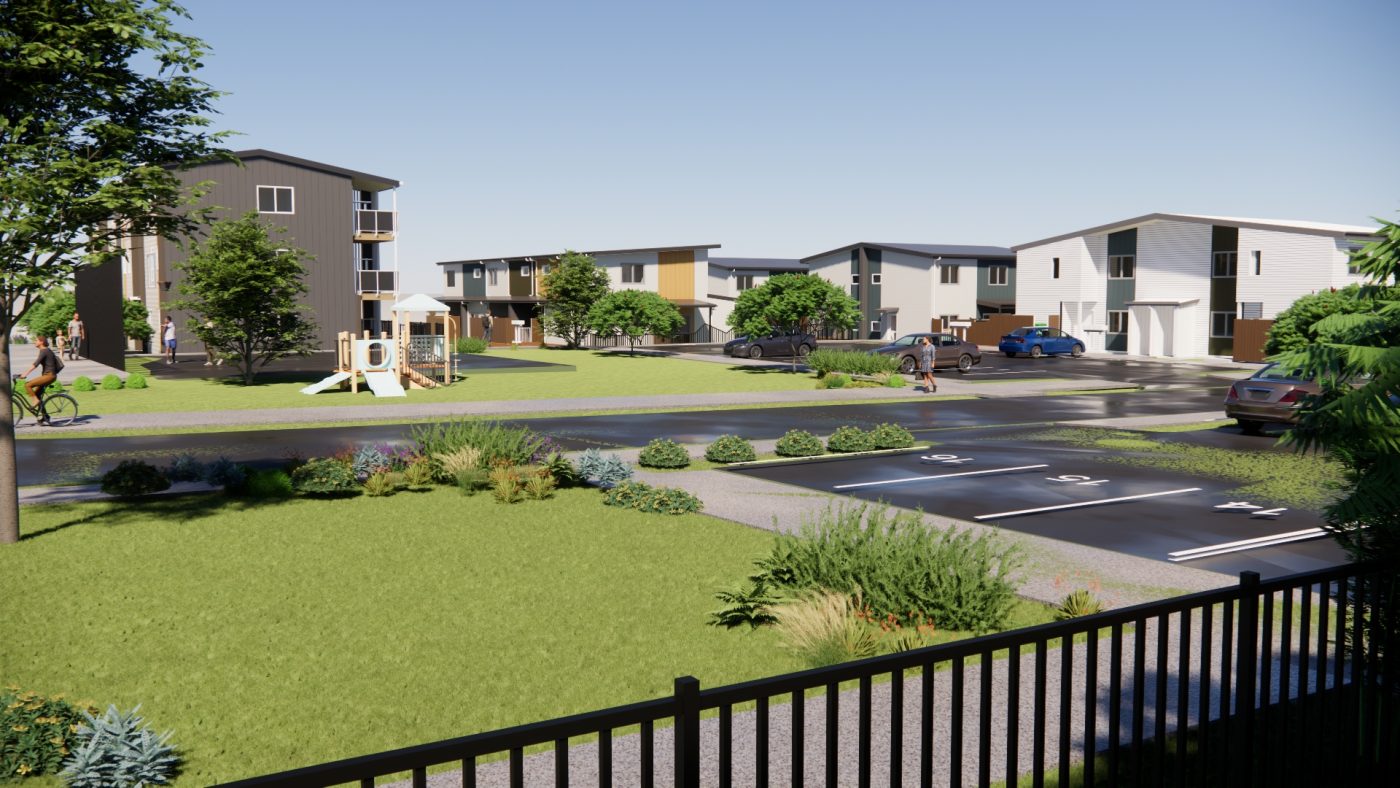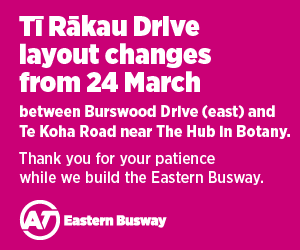
The Salvation Army is building 41 homes in a new community housing development on land it owns in east Auckland.
The site, on the corner of Chapel Road and Baverstock Road in Flat Bush, is adjacent to the charity’s existing 46-unit housing development, ‘Kaitiakitanga’, which opened three years ago.
Salvation Army national housing operations manager Fiona Matthews says the new development will feature 41 properties, most of which will be two-storeys.
“They’re going to be bigger homes,” she told the Times.
“We’ve got our two-bedroom properties here and they can house a family of four, but a lot of our Pacific and Māori whanau need larger homes.
“We’ve got a couple of five-bedrooms going in over there, some fours, a lot of threes, we’ve got one little block of twos, and we’ve also got an apartment building of 12 one-bedrooms that’s three levels.”
Matthews can’t yet say what the development will cost as some details are still being worked through, but its funding is coming from the Salvation Army and the Government.
She says it will also feature a basketball court and a playground.
The homes are designed by Fat Parrot Architecture and will be built by Meridian Construction, both of which were involved in developing Kaitiakitanga.
The Salvation Army has a staff member on-site who acts as an immediate point of contact for tenants and who can sort out any issues.
He’ll perform the same role at the new development once it opens also.
Matthews says the homes to be built are a “really good design”.
“We’ve managed our costs really well. It will be built with panels that are incredibly warm.
“They go up fast and look amazing. In terms of warmth, we try to keep our whanau having their power bills as low as possible.
“They’re structurally-insulated panels with double-glazing to make them really warm.”

The tenants will come from the Ministry of Social Development’s housing register and will pay about a quarter of their income in rent.
“Most of our tenants are there for at least five years and sometimes longer, particularly the older ones,” Matthews says.
“There will be a mixture of whanau. We’re not going to have 10 people in a five-bedroom.
“The reality is you still want an environment that doesn’t feel too intensive.”
And while some of the tenants may be facing challenges, they’ll have access to the resources and support they need.
“We are housing New Zealand’s most vulnerable people,” she says.
“For people with addictions, we might have them through our services like the Bridge programme, our alcohol and drug addiction service, so they might have gone through that and be ready to move out.
“We might have a relapse, that’s just the reality. The tenancy managers interact with social services and are a navigator for people.”
The development will open in a staggered way over a week or two and is expected to be completed by the end of 2025.
The coalition Government has said it wants fewer New Zealanders living in emergency housing motels.
One of the ways it can achieve that goal is by backing developments such as the Salvation Army’s new one in Flat Bush.
Associate Housing Minister Tama Potaka recently said the Government is making good progress to achieve its target of 75 per cent fewer people in emergency housing by 2030.
“In Budget 24, the Government invested $83.477 million to help people with emergency housing support services.
“These services such as case managers, housing brokers, and ready to rent courses, are having a positive impact by giving people in emergency housing the tools to move into better homes.
“We’re regularly improving our data and now know that about 80 per cent of those leaving emergency housing go into some form of social, transitional or private housing because of support they receive.”










